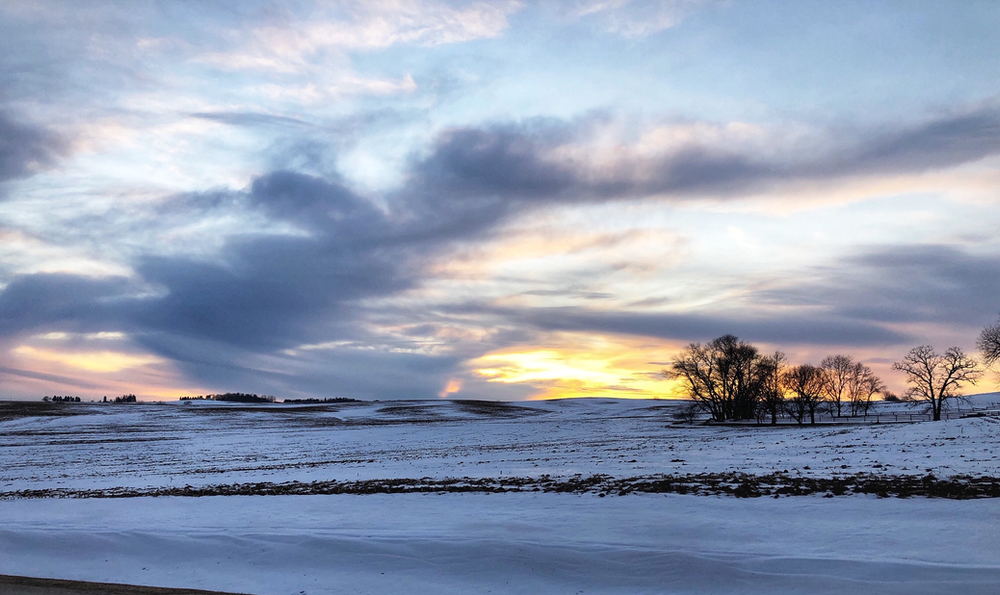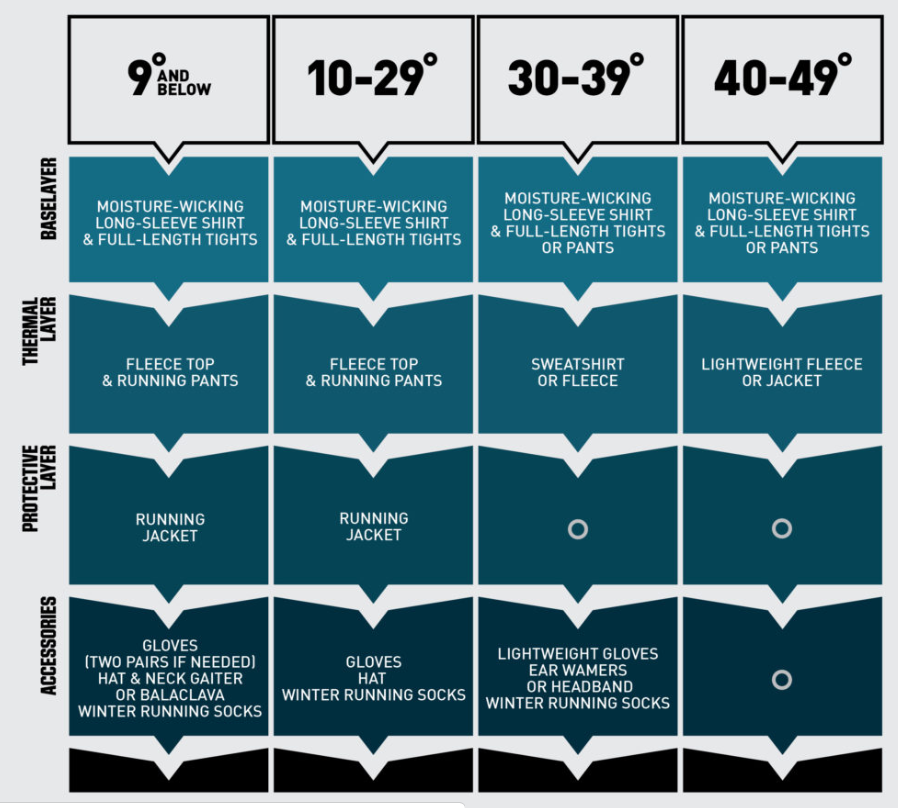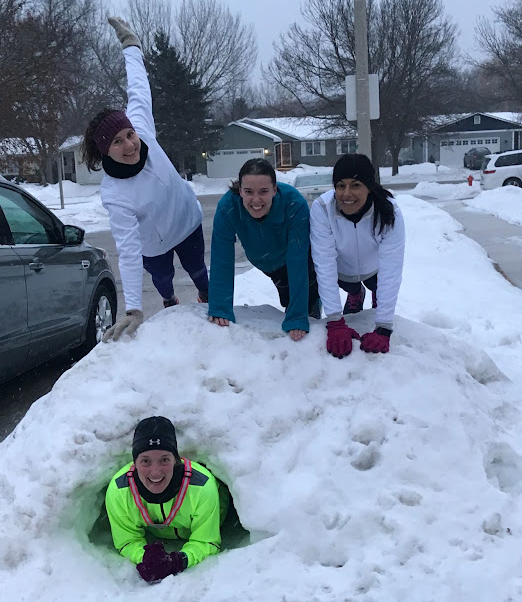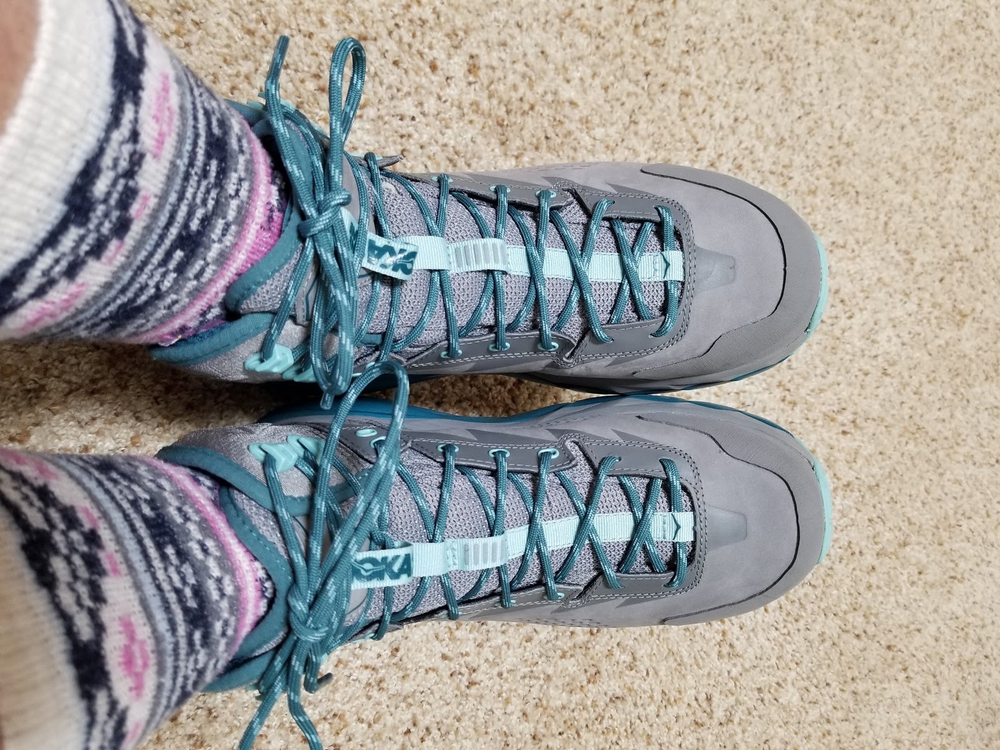
Winter is Coming!
Despite a few minor snowfalls and sub-zero days, our winter has been pretty mild thus far. However, forecasts are showing a rapid shift from the recent balminess we’ve experienced, so it’s an apt time to dig into winter running (and to start wearing your recovery sandals with Smartwool socks. The taller the better; don’t let anyone tell you this is not stylish.)
With the appropriate clothing and some planning, there is no reason to resign yourself to the treadmill until April (or May – sigh).
What to wear:
Be a slayer of your winter workouts in layers! This is a handy guide on how to layer up for different temperatures. [Hint: dress by the “feels like” temperature, which will incorporate the effect of the wind (read more on wind chill below).]

Some helpful tips:
- If you feel comfortable when you head outside, you’re likely overdressed. You should be a bit chilly when you start your run; activity warms us up quickly!
- A good rule of thumb is to dress for temperatures that are 10 (if you tend to feel cold, or are doing an easier, slower paced workout) or 20 (if you tend to feel warm/warm up quickly or are doing a higher effort workout) degrees higher than actual. It’s amazing how warm it gets when you’re moving. Who needs Florida? A winter run can be your tropical escape!
- Post-run change: The flip side of warming up quickly when you’re moving is cooling off even faster when you’re not. If you’re planning to grab a post-run treat or drink with your running buddies (sometimes my dogs refuse to get in the car without a promise that we’ll stop at Dunkin Donuts for munchkins on the way home), a dry shirt and jacket will vastly increase your quality of life.
Get a grip:
Sometimes running is a way to get in touch with our zero-year-old selves, to imagine the days when we didn’t take the ability to stay upright for granted. As thrilling as it is to unintentionally hurl my forty-something-year-old body at the ground, like many things, it was way cooler in 1978. Here are some ways to maintain a safe distance between your head and the ground in slippery winter conditions:
- Slow down and be flexible: some things just aren’t meant to be. Low-calorie desserts. Decaf coffee. An on-point speed workout after an ice storm. Sometimes you just have to adjust your pace and expectations.
- Get more traction: There are many options to increase your winter traction. Trail shoes, which offer more aggressive outsoles, or winter-specific training shoes (like the Saucony Peregrine ICE+) can help you get a grip. Ice spikes slip over any shoes and provide an additional level of protection for more challenging conditions. We have several types of both shoes and spikes at TerraLoco; come check them out. Or, if you want to have fun with an old pair of shoes and a drill (power tools ftw!), check out this article on screwing your shoes for inexpensive traction.
- Run on maintained trails: The city of Rochester does a great job clearing miles of trails for winter recreation. You can find the winter maintenance map here.
Wind/wind chill:
According to a March 2019 article in USA Today, Rochester is the 9th windiest city in the United States. Wind makes already cold air temperatures feel even colder to our bodies. The wind chill index is an important factor to consider when planning your runs or other outdoor activities. Hypothermia and frostbite are serious business; check the temps before you go out. I often plan my running routes according to the wind direction, running into the wind early in my workout before I’m sweaty and more easily chilled, or running a route with the wind on my side if it’s really strong (for example, doing a north to south out-and-back route when the wind is out of the west).
Do you run/walk outside in the winter? What are your favorite products and tips? Share them here!
Leave a Comment
You must be logged in to post a comment.






